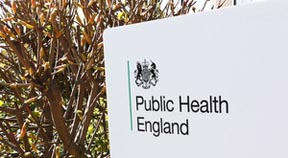New figures published by Public Health England (PHE) show 24 cases of confirmed measles were reported during the final quarter of 2013.

This compares to 103 cases in the previous quarter and 309 cases from the same quarter in 2012.
The numbers of confirmed measles cases in England hit the highest levels since 1995 during the first quarter of 2013, with 587 confirmed cases reported – 10 to 16 year olds were the most affected.
The increase prompted PHE, NHS England and the Department of Health to announce a national catch-up programme in April 2013 to improve MMR vaccination uptake in teenagers.
The main objective of the national catch up programme was to ensure that at least 95% of children aged 10 to 16 years in England received at least one dose of MMR vaccine by September 30, 2013. A PHE evaluation found that by August 2013, approximately 95% of 10 to16 year olds in England had received at least one dose of measles containing vaccine.
In addition to measles, there were 520 laboratory confirmed cases of mumps with onset in the last quarter of 2013, similar to the 506 cases reported in the previous quarter. There was a total 3,524 cases of mumps confirmed in 2013. Three cases of rubella were confirmed in the last quarter of 2013, the same as in the previous quarter, bringing the total infected individuals for the year to 12.

Dr Mary Ramsay, PHE’s head of immunisation said: “Measles is a potentially fatal, but entirely preventable, disease so we are delighted that measles cases have recently decreased in England.
“The best way to prevent measles outbreaks is to ensure good uptake of the MMR vaccine across all age groups, so it’s heartening to see the success the catch-up programme had in ensuring 95% of 10 to 16 year olds in England received at least one dose of the vaccine.
“Although mumps has increased a little from the same quarter of last year the numbers remain much lower than the levels seen in 2004/5, when outbreaks were reported in several universities. This probably reflects the fact that most young people now attending university were eligible for two doses of MMR as children.”

















You must be logged in to post a comment.